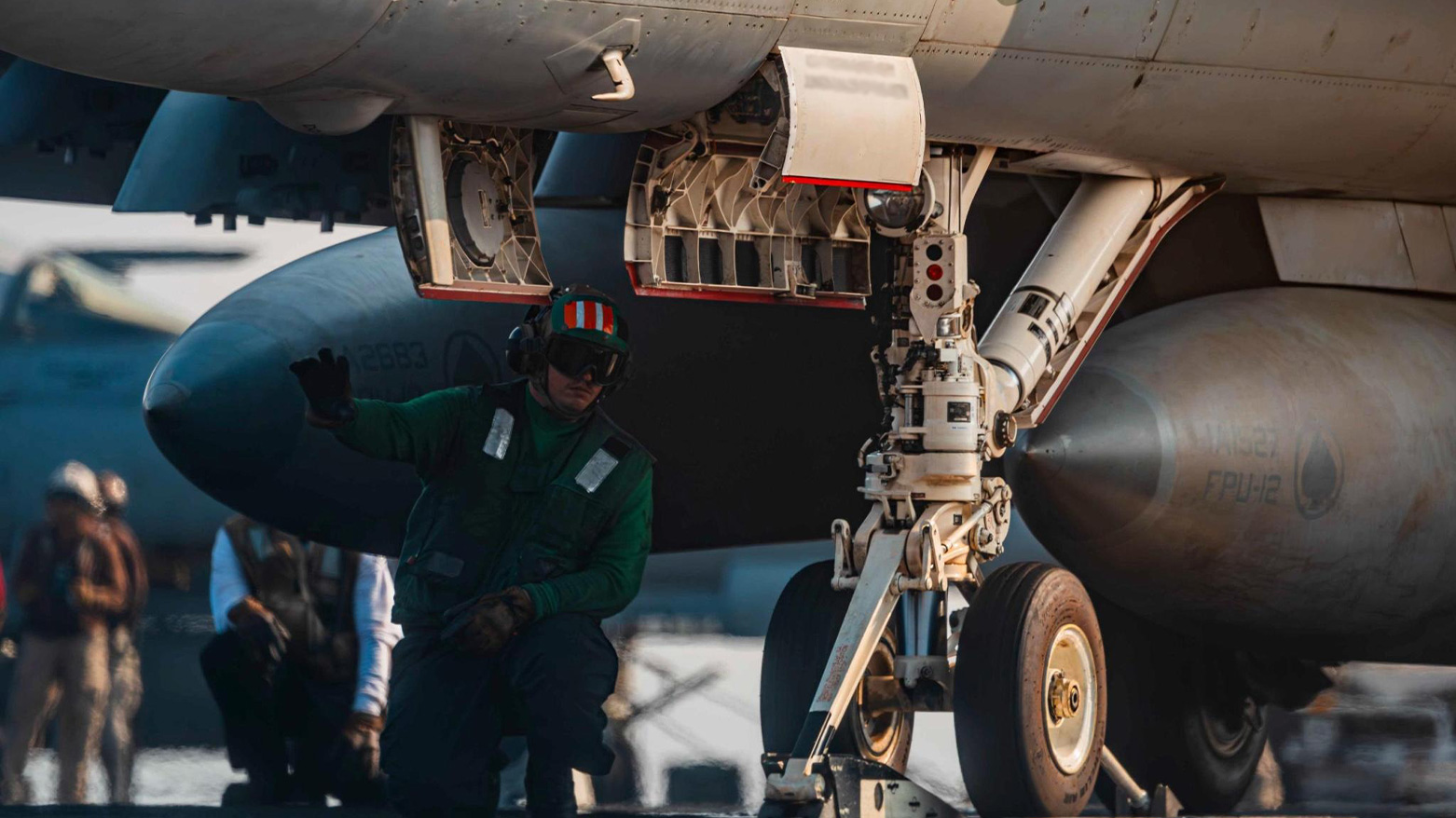Massive U.S. Airstrikes Hit 100+ Houthi Targets in Yemen
Targets included air defense systems, weapons depots, command centers, and facilities used to coordinate maritime attacks.

By Kamaran Aziz
ERBIL (Kurdistan24) — In a dramatic escalation of its military campaign in Yemen, the United States has launched what officials are calling the most extensive wave of airstrikes to date, targeting more than 100 Houthi-linked positions across six Yemeni provinces.
The strikes, which took place overnight, mark the most violent single night in Yemen since the U.S. began operations in the region aimed at deterring Houthi aggression in the Red Sea.
American fighter jets and drones carried out at least 44 airstrikes in Sanaa, Saada, Al-Hudaydah, Al-Jawf, Amran, and Marib. The campaign, according to U.S. officials, focused on degrading the Houthis' offensive capabilities and neutralizing key military infrastructure.
Targets included air defense systems, weapons depots, command centers, and facilities used to coordinate maritime attacks.
Speaking to The Wall Street Journal, a U.S. military official confirmed that several high-ranking Houthi commanders were killed in the operation. However, the official emphasized the challenge of gauging exact results due to the Houthis' tendency to downplay American successes and overstate their own retaliatory capabilities. "It is largely because of the nearly 10 years of support provided by Iran," he noted.
According to a detailed report by The Wall Street Journal, despite what President Trump called an “unbelievably successful” campaign, the strikes have not yet achieved the core objective of deterring the Houthis.
The group continues to fire missiles almost daily toward Israel and remains capable of harassing international shipping routes. Recent days have seen renewed attacks on the USS Harry S. Truman and commercial vessels transiting the Red Sea.
The Houthis, supported militarily and financially by Iran, maintain an extensive network of missile stockpiles and drone assembly lines, many believed to be hidden in rugged mountainous terrain and underground facilities.
The White House confirmed the latest strikes in a statement outlining their strategic objectives. "The targets included key Houthi leadership, air defense systems, command and control centers, and weapons manufacturing and storage sites," the statement read. The administration emphasized that operations will persist until the Red Sea is secured and safe passage for commercial and naval vessels is guaranteed.
The Houthi-affiliated Al-Masirah news outlet also reported on the attacks, claiming that dozens of airstrikes had targeted multiple locations across Yemen. According to the outlet, seven airstrikes hit the capital, Sanaa, including two that struck the city’s airport. Ten airstrikes were reported in Saada, while Al-Hudaydah and Al-Jawf each witnessed three. Nineteen airstrikes were said to have hit Amran, and four others targeted the province of Marib.
Houthi health authorities reported seven injuries in Sanaa’s Bani Hashish district, although there has been no independent confirmation of casualties.
While the strikes have reportedly killed dozens and damaged critical infrastructure, observers cited by The Wall Street Journal caution that airpower alone may be insufficient to defeat the Houthis. The group, which controls large swaths of Yemen including areas housing two-thirds of its population, has previously survived eight years of aerial bombardment by the Saudi-led coalition. Analysts warn that the group’s ability to endure and adapt, combined with its strategic use of asymmetric warfare, poses a persistent challenge.
The Journal also noted that this new phase of U.S. strikes appears far more targeted and coordinated than previous campaigns, aiming to dismantle the Houthis' senior command structure. Houthi leaders have reportedly reduced their social media presence and communications to avoid detection, while continuing to claim that their operations against the U.S. and Israel will persist.
This surge in military action comes amid a sustained campaign by the Houthis to disrupt maritime traffic through the Red Sea and the Bab al-Mandeb Strait. Their targeting of commercial vessels and alleged threats to global shipping lanes have prompted repeated warnings from Washington, culminating in this latest show of force.
U.S. officials have reiterated that the aim of the strikes is not only to protect maritime trade but also to degrade the operational command structure of the Iran-backed militia. While no new deployments have been announced, American military assets in the region remain on high alert for further retaliation or escalation by the Houthis or their regional backers.
With tensions rising and regional security hanging in the balance, the coming days will likely test the limits of military deterrence and the resolve of both the United States and the Houthis. As airstrikes continue and diplomatic efforts stall, Yemen once again finds itself at the center of a volatile geopolitical confrontation.
